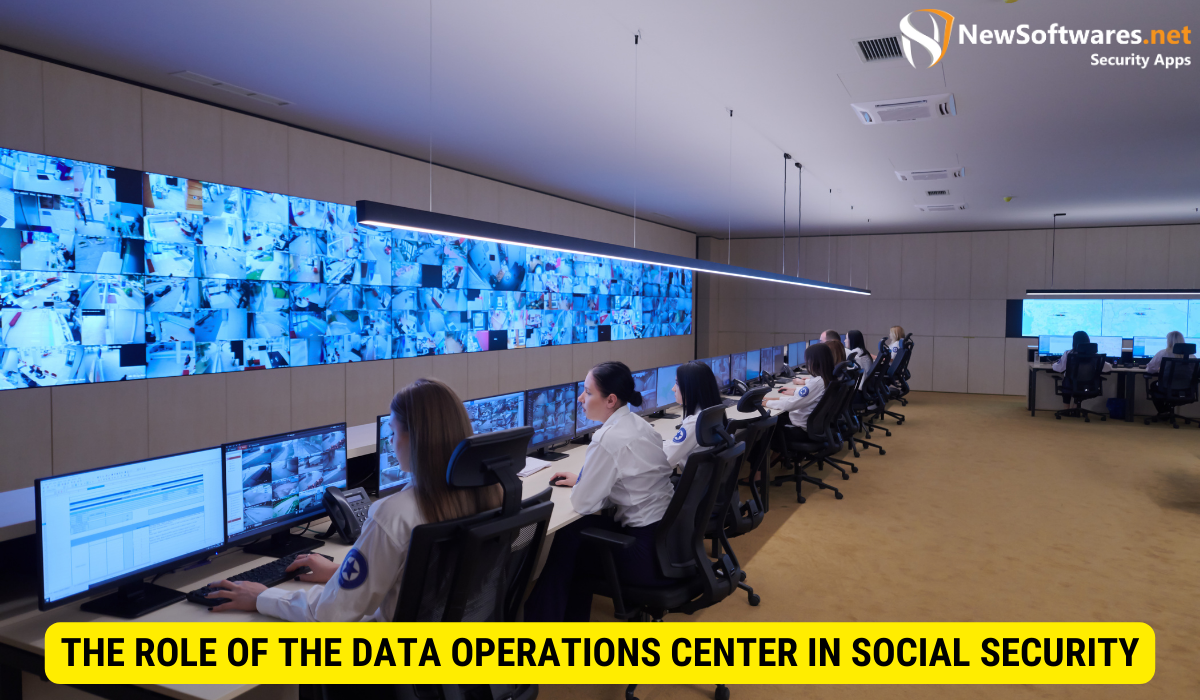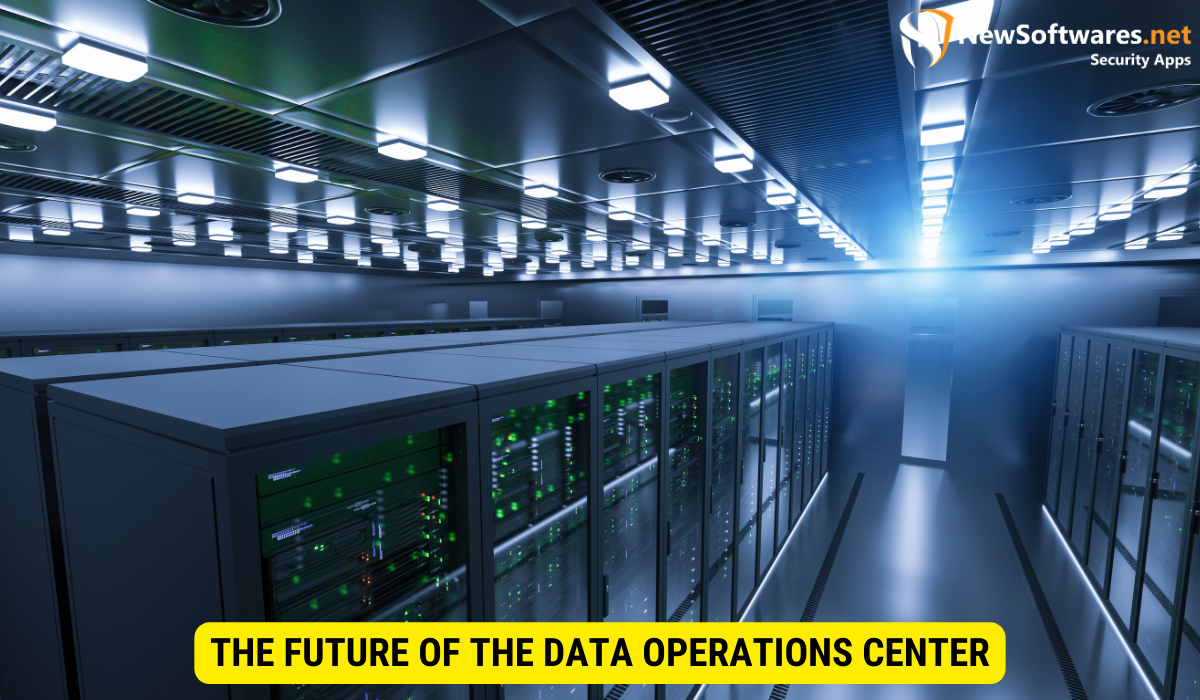The Data Operations Center of the Social Security Administration is essential for managing, processing, and ensuring the security of vast data related to social security programs. It handles data acquisition, validation, and dissemination, using advanced technology and strict security measures. This center faces challenges like managing large data volumes and maintaining data accuracy, but is evolving with AI and ML advancements to enhance its operations and services.
The Social Security Administration (SSA) is an integral part of the United States government, responsible for managing and administering various social security programs. At the heart of the SSA’s operations is the Data Operations Center, a highly specialized facility that plays a crucial role in ensuring the smooth functioning of the organization. I will explore the inner workings of the Data Operations Center, its key functions, the technology behind it, the challenges it faces, and its future prospects.
The Role of the Data Operations Center in Social Security

As the backbone of the SSA, the Data Operations Center serves as a central hub for data management, processing, and analysis. It is responsible for collecting, storing, and organizing a vast amount of information related to social security programs. This includes data on individuals’ earnings, benefits, and Social Security numbers. Such data forms the foundation for eligibility determinations, benefit calculations, and record-keeping.
The Data Operations Center is a bustling facility, housing a team of dedicated professionals who work tirelessly to ensure the smooth operation of the social security system. From the moment data is acquired to the dissemination of information, every step is carefully executed to uphold the integrity and security of the data.
The Core Functions of the Data Operations Center
Within the Data Operations Center, several core functions contribute to the overall effectiveness of the SSA. Firstly, data acquisition involves collecting information from employers, governmental agencies, and other sources. This data is then processed and transformed into a standardized format for analysis and storage.
The process of data acquisition is a complex one, involving the establishment of secure connections with various entities. The center employs advanced technologies and protocols to ensure the confidentiality and privacy of the data being transmitted. Additionally, the center collaborates with external stakeholders to streamline the data acquisition process, reducing redundancies and improving efficiency.
Once the data is acquired, it undergoes a meticulous validation process. Data validation is a critical step in maintaining the accuracy and integrity of the collected information. The center employs sophisticated algorithms and validation techniques to verify the authenticity of records and identify any discrepancies or errors.
The team of data analysts and experts meticulously scrutinize the data, cross-referencing it with multiple sources to ensure its accuracy. Any inconsistencies or anomalies are flagged for further investigation, ensuring that the data used for eligibility determinations and benefit calculations is reliable and trustworthy.
Lastly, the Data Operations Center is responsible for the secure dissemination of data. Access to the collected information is strictly regulated and limited to authorized individuals and agencies. Stringent security protocols are in place to safeguard the data from unauthorized access or breaches.
The center employs state-of-the-art encryption technologies, multi-factor authentication, and robust firewalls to protect the data from potential threats. Regular audits and security assessments are conducted to identify and address any vulnerabilities, ensuring the highest level of data security.
How the Data Operations Center Supports Social Security
The Data Operations Center supports the mission of the SSA by enabling the efficient administration of social security programs. By maintaining accurate and up-to-date records, it facilitates the timely and accurate distribution of benefits to eligible individuals.
The center’s data analysis capabilities also play a crucial role in supporting the social security system. The data collected and analyzed by the center informs policy decisions, program evaluations, and data-driven research initiatives. By identifying trends, patterns, and areas of improvement, the center contributes to the continuous enhancement of social security programs.
Furthermore, the Data Operations Center serves as a valuable resource for stakeholders, researchers, and policymakers. The wealth of data it collects and stores can be utilized to conduct in-depth analyses, evaluate program effectiveness, and develop evidence-based policies.
In essence, the Data Operations Center plays a vital role in fostering transparency, efficiency, and accountability within the social security system. Its robust data management practices, stringent security measures, and analytical capabilities contribute to the overall success of the SSA in fulfilling its mission to provide financial security and support to individuals and families.
The Structure of the Data Operations Center
Within the Data Operations Center, various departments work collaboratively to carry out its core functions. Each department has its unique responsibilities, contributing to the seamless operation of the center as a whole.
Key Departments and Their Functions
One of the key departments within the Data Operations Center is the Data Processing Department. Here, data is processed, transformed, and stored securely. The Data Validation Department is responsible for ensuring the accuracy and integrity of the collected data through verification and validation processes. The Data Dissemination Department oversees access to the information stored within the center, keeping track of authorized users and implementing robust security measures. These departments work in harmony to ensure the smooth functioning of the Data Operations Center and support the broader goals of the SSA.
The Interplay Between Different Departments
Effective collaboration between various departments within the Data Operations Center is critical to its success. The Data Processing Department relies on accurate and validated data from the Data Validation Department. Similarly, the Data Dissemination Department must work closely with both departments to ensure that authorized users can access the required data securely. This interplay between departments ensures that the data is processed efficiently, maintained with integrity, and accessible to those who need it.
The Technology Behind the Data Operations Center
Given the vast amounts of data it handles, the Data Operations Center relies on advanced technology to carry out its functions effectively.
Data Management Systems in Use
The Data Operations Center utilizes sophisticated data management systems to handle the immense volume and complexity of the data it deals with. These systems allow for efficient data processing, storage, retrieval, and analysis. They enable quick access to information, enabling the SSA to respond promptly to inquiries and requests for information. Effective data management systems are essential for maintaining the integrity and accuracy of the data, ensuring that the SSA can fulfill its obligations to the American public.
Security Measures and Data Protection
As custodians of sensitive personal information, the Data Operations Center is committed to safeguarding the privacy and security of the data it manages. Robust security measures are in place to protect against unauthorized access, data breaches, and potential threats. These measures include encryption techniques, multi-factor authentication, physical security controls, and ongoing security audits. By prioritizing data protection, the SSA ensures that individuals’ personal information remains secure and confidential.
Challenges Faced by the Data Operations Center
Operating a data management facility of this magnitude presents its own set of unique challenges.
Dealing with Large Volumes of Data
The Data Operations Center manages an enormous volume of data, which continues to grow over time. Challenges arise in effectively processing, storing, and organizing this ever-increasing amount of information. To address this, the center employs advanced technologies, automated processes, and scalable infrastructure. Regular audits are also carried out to assess and optimize data handling procedures, ensuring that the center can handle the data workload efficiently.
Ensuring Data Accuracy and Integrity
The accuracy and integrity of the data within the Data Operations Center are of paramount importance. Data quality checks, rigorous validation procedures, and periodic data audits are conducted to identify and rectify any discrepancies or errors. By ensuring the accuracy of the data, the center minimizes the risk of incorrect benefit calculations, eligibility issues, and data-related disputes.
The Future of the Data Operations Center

Looking ahead, the Data Operations Center is poised to evolve and adapt to meet the changing needs and advancements in technology.
Technological Advancements and Their Impact
The rapid pace of technological advancement presents opportunities for innovation within the Data Operations Center. Machine learning algorithms, artificial intelligence, and data analytics tools can enhance data management processes, enabling more accurate predictions, faster analysis, and improved decision-making. Embracing these technologies can further enhance the efficiency and effectiveness of the center’s operations.
The Role of Artificial Intelligence and Machine Learning
Artificial intelligence (AI) and machine learning (ML) have the potential to revolutionize the data management landscape. AI can automate routine tasks, identify patterns, and extract insights from vast amounts of data. ML algorithms can analyze historical data to make predictions, detect anomalies, and improve data quality. By harnessing the power of AI and ML, the Data Operations Center can enhance its capabilities and provide better services to the beneficiaries of social security programs.
Key Takeaways
- The Data Operations Center is a critical component of the Social Security Administration.
- It performs core functions such as data acquisition, validation, and dissemination.
- Data management systems and robust security measures are essential within the center.
- Handling large volumes of data and ensuring its accuracy are key challenges.
- The Data Operations Center is poised for future technological advancements, including AI and ML.
Frequently Asked Questions (FAQs)
What is the role of the Data Operations Center in the Social Security Administration?
The Data Operations Center plays a crucial role as the hub for data management, processing, and analysis within the Social Security Administration. It is responsible for the collection, storage, organization, and dissemination of a vast amount of data related to social security programs, including individual earnings, benefits, and Social Security numbers.
How does the Data Operations Center ensure the accuracy and integrity of the data it manages?
The Data Operations Center ensures the accuracy and integrity of its managed data through meticulous validation processes, sophisticated algorithms, and strict verification techniques. It conducts regular audits, cross-references data with multiple sources, and employs rigorous checks to detect discrepancies or errors, ensuring reliability and trustworthiness of the data.
What challenges does the Data Operations Center face in managing large volumes of data?
The Data Operations Center faces significant challenges in managing large volumes of data, including efficiently processing, storing, and organizing the ever-increasing amount of information. Addressing these challenges involves employing advanced technologies, scalable infrastructure, and automated processes, as well as conducting regular audits to optimize data handling procedures.
What technological advancements are expected to impact the future of the Data Operations Center?
Future technological advancements expected to impact the Data Operations Center include developments in artificial intelligence (AI), machine learning (ML), and data analytics tools. These technologies will enhance data management processes, enabling faster analysis, more accurate predictions, and improved decision-making capabilities.
How can artificial intelligence and machine learning contribute to the Data Operations Center?
Artificial intelligence and machine learning can significantly contribute to the Data Operations Center by automating routine tasks, identifying patterns, extracting insights from vast data sets, and improving data quality. AI and ML algorithms can also assist in analyzing historical data for predictive purposes, detecting anomalies, and enhancing overall data management and analysis efficiency.
Conclusion
Understanding the inner workings of the Data Operations Center is crucial in comprehending the complex operations of the Social Security Administration. As we have seen, the center plays an integral role in processing, managing, and ensuring the accuracy of the vast amount of data involved in social security programs. With advanced technology and rigorous security measures, the Data Operations Center is well-equipped to tackle the challenges it faces and embrace future opportunities. By continuously adapting and innovating, the center will continue to support the SSA in fulfilling its critical mission of providing social security benefits to eligible individuals.
